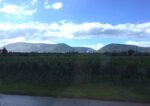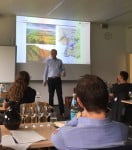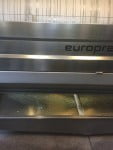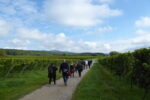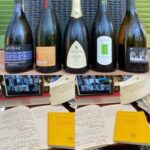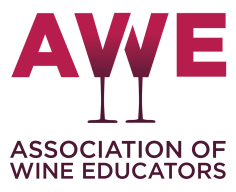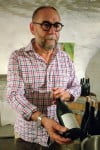Surrounded by immaculately tended vineyards and with the brooding Haardt mountains looking down from the west, the Weincampus Neustadt made a wonderful location for two days of seminars and tastings courtesy of the German Wine Institute. Day one started with a fascinating and thought provoking lecture by Professor. Dr.Ulrich Fischer on the impact of terroir and winemaking on German Riesling styles.
We tasted seven wines from different regions and soils, all in the €10-15 bracket, from the excellent 2015 vintage and with no MLF or oak influence. Were there noticeable differences in style? You bet there were! We noted how slate tended to produce grassier notes whilst sandstone harsher, green apple acidity and shell limestone a softer acid profile. The highlight for me was a Spätlese Trocken from Baden, a region not well known for Riesling, which had a wonderful streamlined, sleek mouthfeel despite a hefty 14% alcohol. The long, lasting acidity was all down to the granite soil. Enlightening stuff and proof indeed that Riesling rocks!
Next up it was Hammer time. Jürgen that is. Ace sommelier, wine educator and possessor of a ‘Riesling rules’ tattoo on his forearm. Jürgen looked like he might be just as at home DJ-ing in a Berlin nightclub as lecturing on Green & Organic wine. His lecture was clear, informative and well presented. But does organic automatically mean better? Do healthier soils mean higher quality wine? He took us through an eclectic and impressive selection which suggested that the answer was yes. My highlights were a lovely, pristine Moskateller and a 2010 Lemberger (Blaufrankisch) GG both from Württemberg. We also tasted some orange wines and a rare Würzer from Rheinhessen, and Cabernet Carbon from Baden, definitely ones to tick off my obscure German wine grapes bingo card.
After lunch, Stefan Schindler had the unenviable task of delivering a dry lecture on the facts and figures on German wine production. He managed to pull it off in a personable, engaging style. The German wine industry is in good health although he did predict that due to global warming we might see Grenache grown in Baden by 2040.
Later in the afternoon we visited Weingut Anselmann in Edesheim, one of the top wineries in the region and official wine supplier to the German Olympic team. The tasting took place in an outside marquee. As the thunder cracked overhead and unwelcome rain lashed down, we were guided through their impressive range of wines which included a rare Cabernet Blanc – another one to tick off my bingo card and their award winning Eiswein which was the undoubted star turn for me.
When we arrived at Weingut Pfeffingen in the early evening, the winery was in full harvest mode, with freshly picked Riesling grapes undergoing pressing in the neat, spotless winery. The family run winery sports a unicorn logo and is situated on the German wine road which runs for 53 miles from the French border to the North of the region.
Our host, Jan Eymael, showed us around some of the vineyards of his 37 acre estate, conveniently situated en route to the restaurant in the village. It provided a welcome opportunity to stretch our legs after a few hours of lectures. As the sun began to set behind the mountains, we visited the prestigious, chalky Herrenberg vineyard on a slope above the road, producing the raw material for their finest Rieslings.
Later on over an excellent dinner, we tasted a selection of their wines. I particularly enjoyed their Scheurebe wines, in both dry form and wonderfully sweet and rich Auslese style, an amazing treat to end the day.
On the way back to the hotel, some of the more energetic members of the group were dropped off at the biggest wine festival in the world, the Bad Durkheimer Wurstmarkt, boasting over 600,000 visitors each year. I decided not to add to that tally, as it had been a very fulfilling day and there was another full day of lectures, tastings and winery visits ahead. It’s a hard life being an wine educator!
Tags: German Wine Academy Germany organic Riesling
